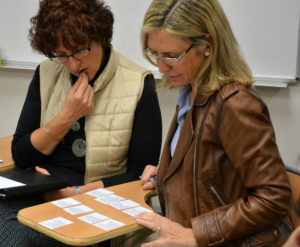Teaching Methodology
It is best said that teaching is the most important single profession, owing to the fact that it forms the basis for all other occupations. Without a doubt, teaching is the art of imparting values, principles, and knowledge to students. This art is in large part based on different teaching methods. We live in the 21st century, where new teaching methods are mutating traditional teaching techniques.
Students like to study only when the subject interests them. For this reason, it’s essential for teachers to ensure their plans to explain various concepts are such that they may be understood easily by students without subjecting them to any boredom. However, teachers must first identify innovative teaching techniques that may be utilized in the classroom.
A classroom is an environment in which students from a wide variety of backgrounds and with varying abilities come to learn. Being successful in a classroom requires that you have a technical and imaginative lesson design to cater to students’ needs.

Community Language Learning
It is a community-based method where the students as a group are quite interactive. It pays a lot of attention to the feelings of the students.

The Silent Way
The teacher literally adopts the silent way while ensuring that they elicit responses from the learners and allowing the learners to try and correct their own mistakes. A lot of time is allotted to the pronunciation.

Natural Approach
As the word ‘natural’ itself suggests, this approach focuses on the acquisition of basic language skills in a naturalistic manner in a class setting. Major emphasis is laid on communication. The teachers are not expected to strictly pay attention to grammar or constantly correcting the errors that the students might make.

Immersion
This term “immersion” has some broader explanation as, there are two types of language; majority language, it is the language spoken by the majority of the people in a given place and region and minority language, it’s the language that minimum number of people speak in a particular region other than majority language.

Task-Based Language
A circumstance where oral correspondence is central for doing a particular errand. Errand based learning has the benefit of getting the understudy to utilize their abilities at her present level. To help make vernacular through its use.

Total Physical Response
Total Physical Response is considered to be an excellent way of learning vocabulary. Moreover, since it is based on commands, the students can easily learn the meaning of the words in the target language.

The Direct Method
This method primarily focuses on the development of oral skills. One of the most important characteristic feature of this method is that visual materials and real-life objects are used. Moreover, such an oral training helps in reading and writing. There is no translation involved in this method.

Grammar Translation
One of the several methods of teaching foreign languages is called ‘Grammar Translation’. As the phrase itself suggests, this method is about learning the grammatical rules and then applying those rules to the language being learnt. Hence, initially the grammatical rules are in the native language.

Suggestopedia
The proponents of this method of learning foreign language suggest that it is imperative for students to learn in an environment which makes them feel comfortable and confident. This method is said to be a teacher-controlled one. However, users of this method believe in acting as partners for the students.

CLT Community Language Teaching
The reality of the situation may prove that one interpretation among the diverse suggestion for syllabus models, hone sorts, and classroom activities may expand more broad support, later on, giving Communicative Language Teaching a status like other instructing methodologies.

Audio-Lingual Method
Audio-Lingual Method is usually also referred to as an Army Method. It is a style of teaching foreign languages. One of the most important features of this method is the practice of reinforcement.

Lexical Approach
The foremost benefit is that the language can be learned quickly and efficiently. The efficacy can be seen from the fact that phrases of a language can be learned in chunks – which breaks the learning process into easy steps.

The Structural Approach
This method is based on the opinion that it is imperative to understand the structures of the language. Understanding the complexities of the structures of the sentences in a language is more important than learning the vocabulary of the language.
Grow your knowledge
On Demand Courses
In-house Teacher Training for Schools
Training Courses
UK, Ireland, Malta
